What's New
Displaying results 1521 - 1530 of 4899
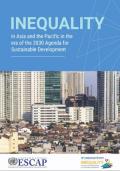
Resource | Publications,
Inequality in Asia and the Pacific is on the rise. Many countries, including those held up as models of dynamism and prosperity, have experienced a widening of existing gaps, accompanied by environmental degradation. Market-led growth alone is not sufficient to deliver a prosperous, sustainable future for all.
This report takes a novel approach by focusing on multiple aspects of inequality – inequality of outcomes, of opportunities and of impacts. It also pays special attention to the potentially transformative role of technology and the impact that the incipient Fourth Industrial Revolution may have on inequality.
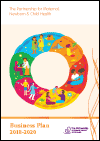
Resource | Publications,
Improving the health and well-being of women, children and adolescents is the greatest collective endeavour of our time. We live in a world of gross inequality and injustice, but also of unprecedented progress. Since 1990, maternal mortality — indicating deaths of women during pregnancy and childbirth — has fallen by 44%, and the death rate for children under age 5 has fallen by 53%. This progress has been achieved largely through the power of partnerships. PMNCH has worked since its inception in 2005 to forge and strengthen these partnerships.
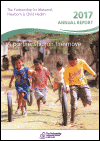
Resource | Publications,
Every Woman Every Child (EWEC), developed by PMNCH partners in 2010, brings the voice of women, children and young people to centre stage in the Sustainable Development Goal (SDG) era. In 2015, the United Nations (UN) launched the EWEC Global Strategy for Women’s, Children’s and Adolescents’ Health (Global Strategy), building on momentum under the EWEC movement’s first Global Strategy (2010– 2015) and aligning with SDGs.

Resource | Publications,
The HIV surveillance system in Hong Kong comprises 5 main programmes to provide a detailed description of the local HIV/AIDS situation. They are (a) voluntary HIV/AIDS case-based reporting; (b) HIV prevalence surveys; (c) sexually transmitted infections (STI) caseload statistics; (d) behavioral studies; and (e) HIV-1 genotyping studies. All data are collected, analysed and disseminated regularly by the surveillance team of Special Preventive Programme (SPP), Centre for Health Protection (CHP), Department of Health(DH). At present, the latest HIV/AIDS statistics are released at quarterly intervals at press media briefings and in electronic format (http://www.aids.gov.hk). Data from various sources are compiled annually and released in this report.
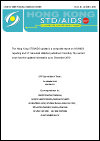
Resource | Publications,
The Hong Kong STD/AIDS update is a composite report on HIV/AIDS reporting and STI caseload statistics published 3 monthly. The current issue has the updated information up to December 2018.

Resource | Fact Sheets,
In June 2017, the World Bank and the International Center for Research on Women released groundbreaking results from a major three-year research study on the global costs of child marriage. The study found that child marriage is not only a human rights violation having a major impact on the wellbeing of girls, it also has major negative impacts for households and national economies. This brief highlights key messages from the study that are important for helping policymakers, finance ministers and governments to understand how ending child marriage can save money and alleviate poverty.
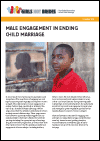
Resource | Fact Sheets,
In recent years, there has been growing evidence and recognition of the importance of engaging men and boys to improve gender equality and empower women and girls. The evidence base on male engagement in ending child marriage, specifically, is relatively thin, with only a handful of studies assessing whether programmes shift the attitudes and behaviours of men and boys around child marriage. Those programmes that have been rigorously studied suggest that it is indeed possible to shift boys’ attitudes toward child marriage including the appropriate age of marriage for girls.
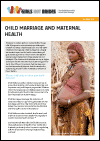
Resource | Fact Sheets,
Every year 12 million girls are married before the age of 18. If progress is not accelerated, 150 million girls could be married in childhood by 2030.1 As a key driver of adolescent pregnancy, child marriage has a hugely detrimental impact on the health and wellbeing of girls and young women, who are more susceptible to experiencing complications during pregnancy and childbirth. The children of child brides are also at higher risk of poor health outcomes than children of girls who marry later. If we act to prevent child marriage now, we could dramatically improve health outcomes for millions of girls and women worldwide, and those of their children.
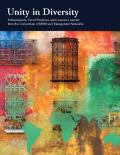
Resource | Publications,
This case study is about the Consortium of MSM and Transgender Networks (the Consortium), a groundbreaking collaboration of global and regional networks by and for men who have sex with men (MSM) and transgender people. It describes the Consortium’s achievements, good practices and lessons learned, with a focus on its most recent work.
The case study is framed around eight key achievements from the Consortium’s action on HIV, sexual health and human rights. Each one is illustrated by examples of the work of members. All of the examples are inter-dependent – with the efforts of one or more networks not possible without the backing of other members and the Consortium as a whole. The examples also highlight critical issues about coordinating a large and effective Consortium. This includes the importance of having agreed principles, transparency, consistent communication, strong financial and programmatic management, and skilled group facilitation, especially during tough decision-making.
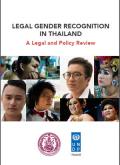
Resource | Tools,
The rights to self-determination and recognition before the law are fundamental human rights belonging to everyone without distinction including transgender people. However, the human rights of transgender people in this regard continue to be violated and disrespected across the world, in the Asian region and within Thailand itself. This report, Legal Gender Recognition in Thailand: A Legal and Policy Review has captured and explored the small number of laws, regulations and policies in Thailand that include transgender people within their scope and which may be relevant to legal gender recognition.





